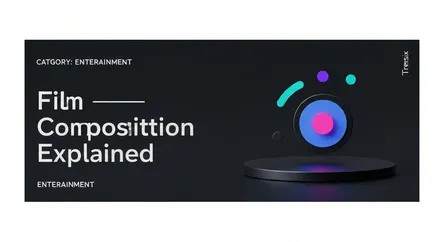Entertainment
Film Composition Explained

Discover the art of film composition. Learn how cinematographers use framing, the rule of thirds, and visual elements to tell a story and evoke emotion.
What is it?
In filmmaking, composition is the deliberate arrangement of all visual elements within the frame. This includes actors, lighting, color, and props. Using principles like the rule of thirds, leading lines, and framing, cinematographers create shots that are both aesthetically pleasing and narratively significant. The core purpose is to guide the viewer's eye, establish a mood, and convey information without words. It's the silent language of cinema, turning a static frame into a dynamic piece of storytelling.
Why is it trending?
Film composition is trending due to the explosion of video essays on platforms like YouTube and TikTok, which deconstruct filmmaking for a mass audience. Viewers are becoming more visually literate, appreciating the craft behind the movies they love. The unique, often symmetrical styles of directors like Wes Anderson or the epic scope of films like "Dune" frequently spark viral discussions about shot design. This has led to a broader cultural appreciation for cinematography as a key component of a film's success.
How does it affect people?
Composition directly impacts an audience's emotional and psychological response. A balanced, orderly frame can feel calm and stable, while a canted angle or chaotic arrangement can create tension and unease. It tells us where to look, making a character seem powerful or vulnerable based on their placement. By controlling the visual information, filmmakers can immerse the viewer deeper into the story, strengthening the narrative's emotional core and making the experience far more memorable and impactful.